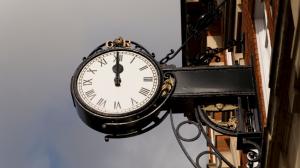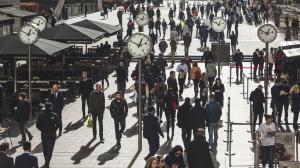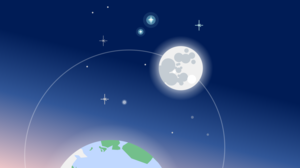
Best Comet of 2025?
C/2024 G3 (ATLAS) has already become very faintly visible to the naked eye for observers in the Southern Hemisphere.
Mother’s Day is a day for many people to show their appreciation towards mothers and mother figures worldwide. It is an annual event but is held at different dates in the calendar, depending on the country.

Flowers and other gifts are given to mothers on Mother's Day.
©iStockphoto.com/Brothers91
Many people remember their mothers and mother figures on Mother’s Day. Mother figures may include stepmothers, relatives, mothers-in-law, a guardian (eg. a foster parent), or a family friend. There are many different ways to celebrate Mother’s Day. They include (but are not limited to):
Mother’s Day is celebrated in different countries, including China where carnations are popular Mother’s Day presents. Some groups in Samoa organize elaborate song and dance performances throughout the country. They celebrate the contributions that mothers make to Samoan society.
Mother’s Day falls on different days depending on the countries where it is celebrated. It is held on the second Sunday of May in many countries, such as Australia, Canada and the United States. It is held exactly three weeks before Easter Sunday in the United Kingdom. Sundays are usually non-school and non-working days in these countries.
Mother’s Day is an annual public holiday in countries such as Costa Rica (August 15, on the same day as Assumption Day), Georgia (March 3), Samoa (second Monday of May), and Thailand (August 12). Restaurants and cafes may be busier than usual as some people take their mothers out for a treat.
Early Mother's Day celebrations can be dated back to the spring celebrations to honor Rhea, the Mother of the Gods, in ancient Greek civilization, according to some sources. Later, Mothering Sunday in the United Kingdom was traditionally a day for people to visit the church where they were baptized, although it now also celebrates motherhood in modern times.
The modern-day origins of Mother's Day can be attributed to two women – Julia Ward Howe and Anna Jarvis, who were important in establishing the tradition in the United States. Around 1870, Julia Ward Howe called for Mother's Day to be celebrated each year. It continued to be held in Boston for about 10 years under her sponsorship, but died out after that. Other sources say that Juliet Calhoun Blakely initiated Mother’s Day in Albion, Michigan, in the late 1800s. Her sons paid tribute to her each year and urged others to honor their mothers.
In 1907, Anna Jarvis held a private Mother's Day celebration in memory of her mother, Ann Jarvis, in Grafton, West Virginia. In 1908, she played a key role in arranging a church service that attracted 407 children and their mothers. A Mother’s Day International Association was founded in 1912 to promote the holiday in other countries. Mother’s Day has grown increasingly popular since then.
Many people believe that Mother’s Day is now largely commercialized, with card companies, flower shops, jewelry stores, gift shops, restaurants, hotels, and department stores advertising promotions and special deals for this event. Anna Jarvis, in her lifetime, unsuccessfully filed a lawsuit to stop the over-commercialization of Mother's Day.
There are various ways to show an appreciation for mothers and mother figures on Mother’s Day. They include white carnations, which Anna Jarvis asked to be the official symbol for the day, as well as the International Mother’s Day Shrine. This shrine is dedicated to the preservation of motherhood. The structure is listed on the National Register of Historic Places in the United States. It is located together with a museum at Grafton, West Virginia, and aims to preserve, promote and develop the spirit of motherhood.
Note: This article provides a general overview on Mother’s Day and does not provide every detail of the different customs, traditions, symbols, and practices for each country that celebrates the day.

C/2024 G3 (ATLAS) has already become very faintly visible to the naked eye for observers in the Southern Hemisphere.

How does the 12-hour clock system work? Is midnight 12 am or 12 pm?

Why do many countries set the clocks back and forth an hour twice a year?

Why are there 12 months? How long are they, and what do the month names mean?